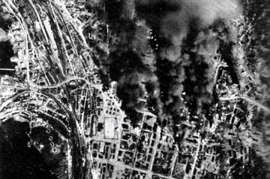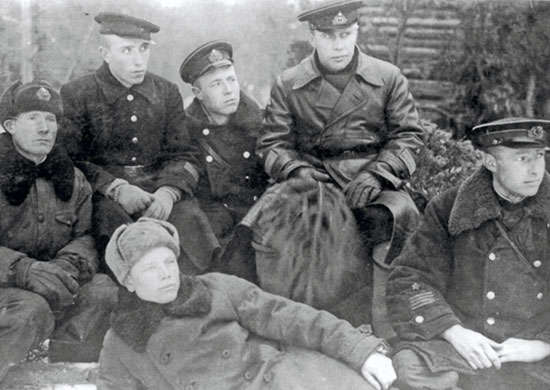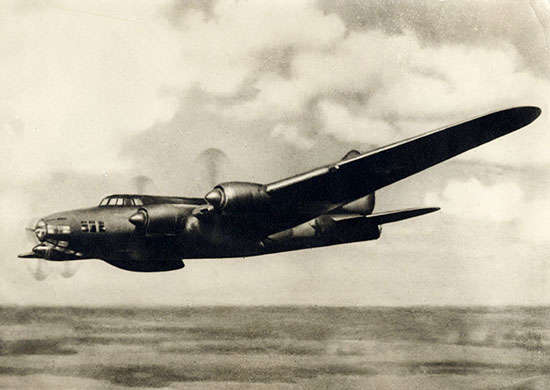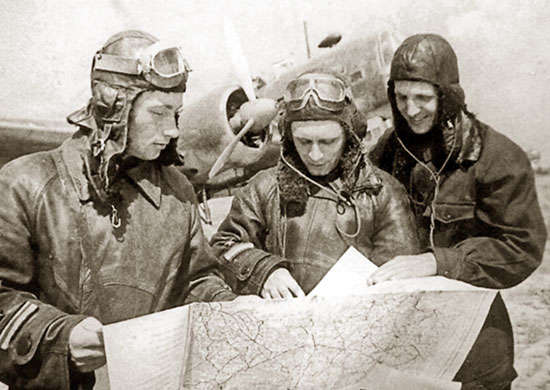
The bombing of Berlin, 1941
A month and 2 weeks after the start of the Great Patriotic War, the USSR struck back at Germany. On the night of August 8, planes with red stars bombed Berlin.
Could not “hold out” back
These were long-range bombers, DB-3 designed by Ilyushin, at that time already renamed IL-4. But the People's Commissar of the Soviet Navy, Nikolai Gerasimovich Kuznetsov, in his post-war memoirs, calls them the old fashioned way. However, like the base of the aircraft – the Estonian island of Saarema, which was previously called Ezel.
Comrades pilots. (1969). Navigator PI Khokhlov talks about the air raid on Berlin. Newsreel 1941 Airfield Cahul.
“At the end of July,” the People's Commissar recalled, “the Nazis carried out their first raid on Moscow … We wanted to carry out a retaliatory raid on Berlin. But how? Aircraft DB-Z, even with afterburner (DB-ZF), from the Leningrad airfield hub did not reach the enemy's lair … Once, having unfolded an overview map, V.A.Alafuzov and I, acting chief of the Main Naval Staff, discussed the general situation at the fronts … Vladimir Antonovich used a compass to try on how far our planes could be sent. From the Leningrad airfields, they “held out” only a little further than Libava. But if you start from the airfields on the island of Ezel, then you can get to Berlin! True, you will have to fly over the sea and, having dropped the bombs, immediately return. Lose 20-30 minutes in flight, and the pilots will not reach their airfields …
Finally, after consultation with experts, we came to the conclusion that if the planes take a full supply of fuel – 3000 kg – and no more than 750 kg of bombs, then they will cover the distance to Berlin – about 900 km – and return home with 10-15% of the fuel supply. …
The regiment planned for such a responsible assignment was commanded by Colonel E. N. Preobrazhensky, and the navigator of the regiment was an excellent specialist, Captain P. I. Khokhlov. The calculations made by him have confirmed the possibility of such a task. ”

Colonel P.N. Preobrazhensky with the crew of his ship.
“You could even see the arcs of the trams.”
Fortunately, the aforementioned Pyotr Ilyich Khokhlov survived the war and also left memories. They are called “Over the Three Seas.”
“That evening,” Khokhlov wrote, “a map with an unusual route was put into my navigator's tablet: the island of Saaremaa – Berlin. For several hours the commander and commissar of the regiment and I pondered this route and the ways of its implementation. Indeed, in those difficult days for our country, it seemed simply incredible, fantastic.
Evgeny Nikolaevich Preobrazhensky, I remember, said then:
The Kagul airfield, where we landed (long-range bombers were based near Leningrad. – AiF.), Was built just before the war for the basing of fighters. It is immediately evident that the conditions are not easy for our bombers. The runway is 1,300 meters … And the air defense of the Cahul airfield was weak. Two batteries of 76mm anti-aircraft guns and 14 I-153 fighters ”.

TB-7 in flight.
On August 7, the order was received, the departure time is 21 hours. “Berlin,” Khokhlov continues, “we saw from afar. First, a bright spot appeared on the horizon. It grew larger and larger with each passing minute. Finally it turned into a half-sky glow.
I was dumbfounded by surprise – the fascist capital was illuminated. And we have not seen city lights for a long time in our homeland.
I take the flagship plane out to Stettin railway station. The configuration of illuminated streets and squares is clearly visible from the air. You can even see how the arcs of the trams, sliding along the electric wires, sparkle. The surface of the Spree River gleams in the lights. Here you will not get lost, you will not confuse the selected object.
The illuminated city is silent. Not a single shot, not a single searchlight beam directed into the sky. This means that the air defense here, too, takes our aircraft for their own.

Preparing a bomber for a combat mission.
Target! Now only the goal. And here she is in front of us. Here is the station, surrounded by a web of railroad tracks clogged with trains.
The deadly load has been dropped for 40 seconds. And then we see below, on the ground, fiery bursts. In one place, in another. In many places. We see how the flame spreads from them – where in thin streams, where in wide stripes. In different sectors of the city we see circles and squares of fire.

DB-3 bomber crew.
Illuminated Berlin suddenly plunges into the darkness of the night. But at the same time, the bonfires we have lit up are even brighter.
Finally, searchlight beams pierce the air. There are many of them. They rummage across the sky, trying to take our planes into their tentacles. And among the rays at different heights, anti-aircraft shells are bursting. The guns are throwing them out in the hundreds. A large number of tracer shells leave behind multi-colored trails, and they show how the shells, having reached a certain height, go down, leaving a trail of fire. If it weren't for the war, one would think that there is a giant fireworks display over Berlin. The whole sky is on fire. And the city is plunged into darkness … The gunner-radio operator of the flagship Krotenko hastily sent a radio message to his airfield with the previously agreed text: “My place is Berlin. Completed the task. I'm coming back. “
The raids on Berlin from Saarema continued until 5 September. In total, ten raids were made, 311 bombs were dropped.

